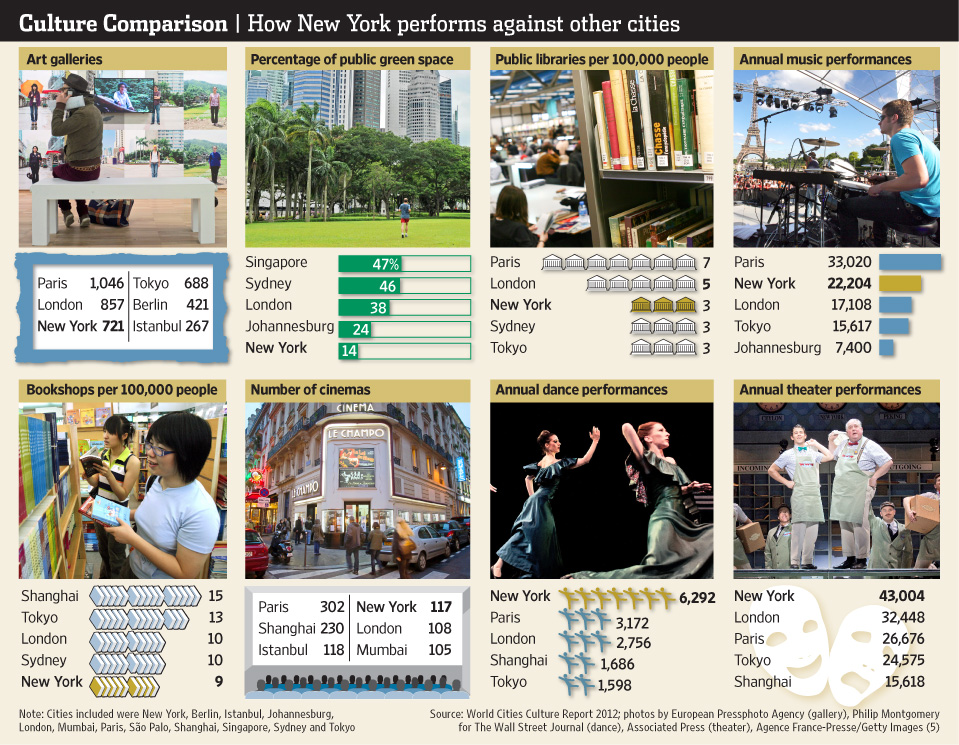The Board of Directors of the Bush Foundation announced on July 30 that Jennifer Ford Reedy will join the organization as its next president. Reedy is the current chief of staff and vice president of strategy for Minnesota Philanthropy Partners (MN Partners), a network of organizations including The Saint Paul Foundation, Minnesota Community Foundation, F.R. Bigelow Foundation and the Mardag Foundation.
Grantmakers in the Arts
From Elizabeth Quaglieri at technology In the Arts:
From Lorna Kneeland, Executive Director of PONCHO, guest blogging at 4Culture:
From Kelly Chen and Imani M. Cheers at PBS Newshour:
From The Wall Street Journal News Graphics feed comes this illustration of how New York City ranks culturally to other major world cities.
From Kathleen Massara at The Huffington Post:
A new session has been added to the 2012 Web Conference Series to discuss the new K-12 Arts Education Policy Agenda being worked on by the GIA Arts Education Funders Coalition (AEFC). GIA formed the AEFC in the spring of 2012 for funders concerned with arts education. One of the purposes of the group is to investigate ways to embed the arts into current federal education policy. Working with the Penn Hill Group, an education policy firm in Washington, DC, the coalition's Advisory Committee has created an agenda that encompasses several opportunities for arts education.
From Elizabeth Day at The Guardian:

